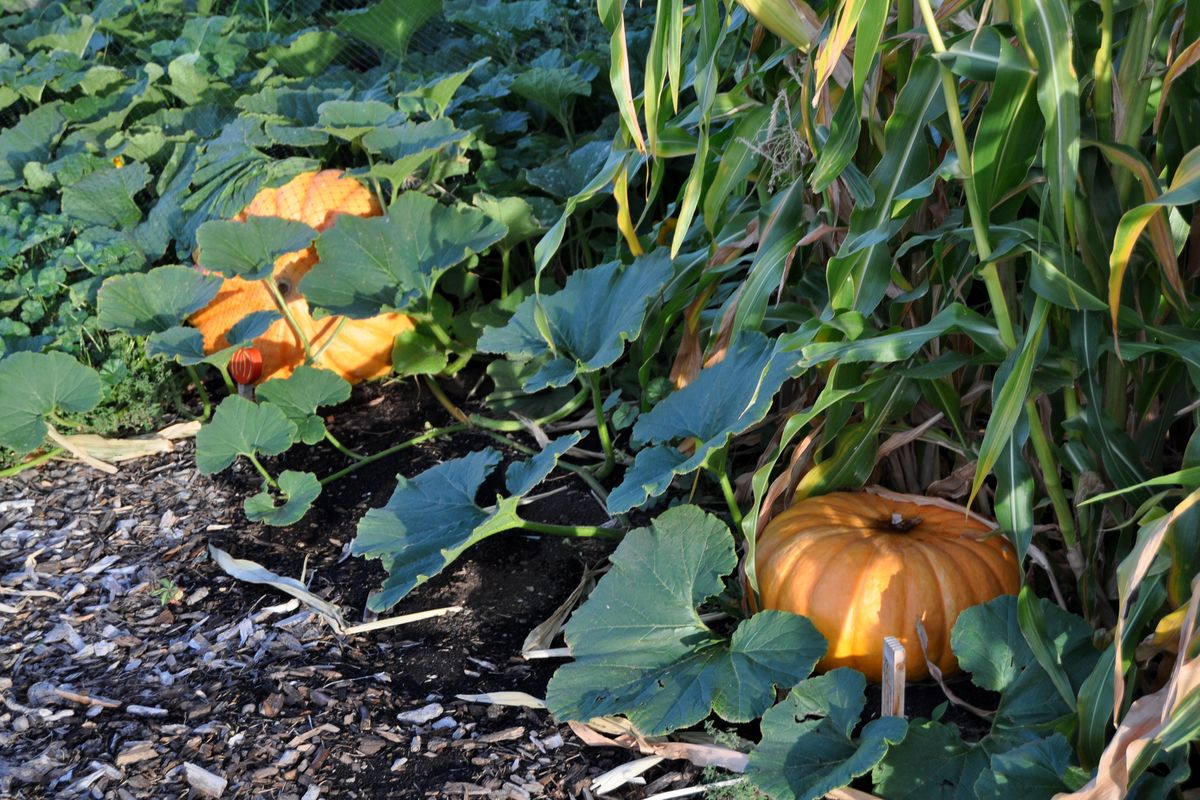Pumpkins, ripe early, need special care

This week’s column is a collection of observations and random trivia collected from my circle of gardening buddies.
• Are your pumpkins turning orange already? You aren’t alone. Our record-breaking warm summer has pumpkins turning orange a good month to six weeks early.
Are they ready to pick? Yes and no. If the vines are still healthy and vigorous, leave the pumpkins in the patch until the vines start dying or frost threatens. They won’t grow any bigger but will start hardening off so they can be stored. If the vines are succumbing to powdery mildew or if the deer have discovered your tasty treats, pick the orange ones and set them in a warm shaded place between 65 and 75 degrees for 10 days to let their rinds harden up and small nicks heal. Then store them in a basement at 60-65 degrees and 50 to 60 percent humidity so they aren’t touching.
Oh yeah, the mildew? There isn’t anything you can do at this point to make it go away. It flourishes when we start getting cooler nights and warm days.
• Earwigs anyone? They don’t seem to be as abundant as last year but they are popping out of ears of corn, cabbages and a host of other vegetable crops.
Earwigs are a mixed blessing; on one hand they are scavengers who forage on rotting plant material and other small insects which makes them a benefit in the garden. On the other hand, they do munch on our crops, especially seedlings, and startle us when we uncover their hiding place. Their pincers on the end of their abdomen can nibble us.
The best way to put a dent in the population is to cultivate the soil early in the spring to expose eggs to predators. Lay out sheets of cardboard or plywood; the earwigs will hide under these during the day and feed at night. Check your traps every day and remove any insects you find. Clean up organic debris and put it in the compost pile to reduce their food supply. There is one recommended chemical control but it is very toxic to honeybees so I won’t suggest it.
• Lastly, ever heard of a bumble flower beetle? Neither had I but there were several brought into the Washington State University Master Gardener Clinic recently.
They are a broad oval shape about a half-inch long and range from yellow-brown to dark reddish brown. Their body is covered with dark spots and dense yellowish-brown hairs. They make a buzzing noise in flight.
The beetle overwinters as a C-shaped larvae that feeds on decaying matter and emerges in the spring. The adults are drawn to oozing sap from fruit trees, flowers and ripe corn, apples, grapes, melons and peaches.
The best control at the moment is to hand-pick them and drop them in a container of soapy water. For long-term control, clean up organic debris in the garden so there isn’t a place for the larvae to overwinter.